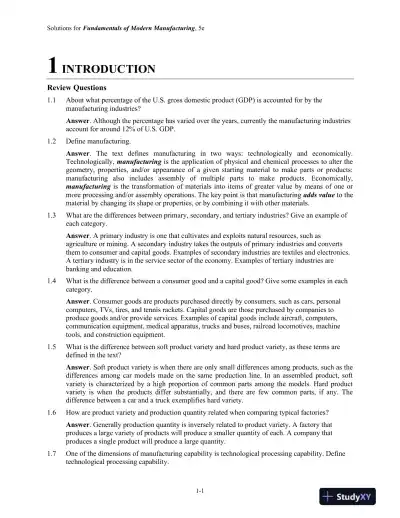Page 1

Loading page ...
Solution Manual for Fundamentals of Modern Manufacturing: Materials, Processes, and Systems, 5th Edition helps you break down challenging textbook sections for easy learning.

Loading page ...
This document has 265 pages. Sign in to access the full document!